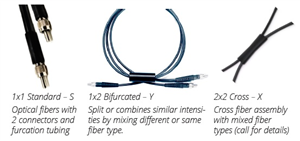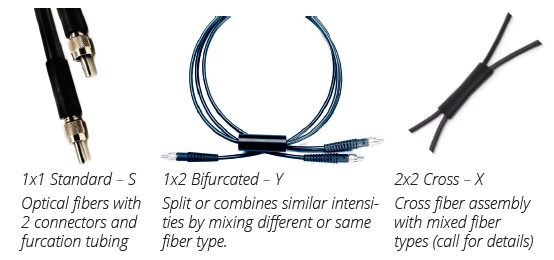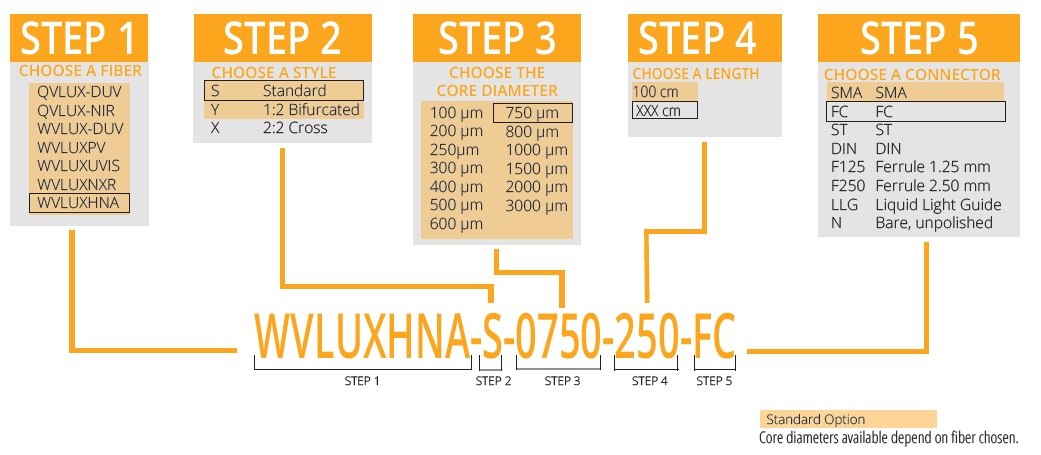
SOLUTIONS FOR ALL YOUR OPTICAL NEEDS
WPI's Photonics Center of Excellence in Friedberg, Germany, allows WPI to build proven custom configurations quickly.- Overview
- Citations
- Specifications
- Models
- Related Products

There are 1 images available to view - click to enlarge and scroll through the product gallery.
SOLUTIONS FOR ALL YOUR OPTICAL NEEDS
/ Download as PDF
Optical measurement is important to researchers. Whether it is fluorescence studies or measuring absorbance of trace compounds, WPI is your solution partner who has the tools you need, and the technical understanding to help you solve your application challenges.
Starting in 1993 with our first patented liquid waveguide capillary cell (LWCC) for precise absorbance measurement of very low concentrations, WPI now provides a full range of components and solutions, including proprietary qualified fibers, optical assemblies and fully integrated spectroscopy measurement systems.WPI's Photonics Center of Excellence in Friedberg, Germany, allows WPI to build proven custom configurations quickly. The close collaboration with key universities such as the THM University of Applied Sciences gives WPI a leading edge.
Features
- High quality silica/silica fibers for DUV/UV/VIS/NIR
- High quality silica/polymer clad fiber for high NA and broad wavelength range
- High flexible PMMA fibers for VIS wavelength range, large core fiber and high NA
- Industry leading solarization resistance at DUV-UV wavelengths: 180-1200 nm
- UV-enhanced broad range: 260-2200 nm
- High laser damage resistance
- Broad temperature range
- Easy customization by: core size, connector, jacketing, and configuration
- Assemblies manufactured with biocompatible materials (connectors, epoxies and furcation tubing)
- Radiation resistance – dose dependent
- Sterilizable by common methods
Benefits
- Robust fiber and assemblies for UV use. WPI’s fiber resists degradation due to UV exposure better than virtually any fiber on the market. This means less changeouts and better data comparison run to run.
- Unique extended range fiber that covers the high UV to long NIR wavelength range
- Qualified fiber allows true “plug and play” replacement
- Qualified QVLUX fiber is ideal for OEM and applications requiring field service or where multiple instruments must be used for a battery of tests
- Wide selection of fiber materials and sizes to manufacture the optimum fiber assembly for your application
- WPI’s fiber optic assemblies are uniquely designed for biology and physiology applications with small size and excellent photon efficiency
- Custom configurations for your specific application are easy to specify and quick to deliver
- Customer support with in-house engineering and manufacturing for optical assemblies
- For critical biological work, many of our assemblies can be sterilized with gamma radiation, H2O2, ETOH or autoclave. Ask for details.
The QVLUX proprietary fiber series is WPI’s most advanced fiber product line. QVLUX-DUV silica fibers are very resistant to UV light down to 185 nm but also have the uniformity and performance that OEM applications require. QVLUXNIR fibers perform exceptionally well in the 700 to 2200 nm wavelength region. WPI is the only company offering DIN 58145:2018-01 certified low solarization UV fibers and assemblies for 185 m to 340 nm. For less demanding applications, we offer our standard WLUX fiber in both silica and polymer cores. While WPI
offers QVLUX and WVLUX assemblies in many standard configurations, custom configurations can be quickly manufactured in house.
Basics of using optical fibers in science
Different than the fiber used for telecommunications, scientific optical fibers efficiently transmit light at many wavelengths. The amount of light that can enter a fiber and be transmitted is determined mostly by three factors:
- Core diameter size
- Material of the core
- Material of the cladding.
The difference in the refractive index between core and cladding sets the numerical aperture, i.e. the maximum angle that light can enter the fiber and transmits through the fiber. In addition, fibers are specified by wavelength region: typically, UV-VIS (190-800 nm) or VIS-NIR (400-2200 nm). For sensing and light delivery applications we offer fused silica, polymer cladded fused silica and solid polymer fibers, whichever are most suitable for your application. Silica fiber has a lower numerical aperture, but more efficiently transports light, especially at UV wavelengths. Polymer core fiber has a higher numerical aperture allowing more light to enter the fiber and may be a better choice for normal temperature conditions in a laboratory, especially in fluorescence detection.
Qualified fibers for UV applications
Our QVLUX fiber has been engineered to not only provide superior transmission in the UV but have excellent consistency over length. This makes QVLUX a perfect choice for critical measurements or where “plug-and-play” capability is required without having to recalibrate after a fiber assembly change. Standard silica fiber exhibits a “solarization impact” when transmitting light in the UV below ~280 nm. Over time, depending on the optically transmitted power, the fiber’s ability to transmit UV light drops off. Our QVLUX fiber offers superior resistance to solarization, lowest basic attenuation at 200 nm (< 1 dB/m) and the lowest solarization at 214 nm on the market. WPI is the only company offering DIN 58145:2018-01 certified low solarization UV fibers and assemblies for 185 nm to 340 nm. Our standard WVLUX fused silica optical fibers are designed for value, but keep in mind that they lose their transmission over time and at high power due to the solarization effects of UV light below 280 nm.
Qualified fibers for NIR applications
We also offer QVLUX fiber for the 700-2200 nm range that works well in demanding petro-chemical, food and pharmaceutical applications. This region is very difficult for standard fibers from traditional suppliers since they cannot control their processes or glass chemistry sufficiently to have the purity required for high-standard of uniformity and superior optical throughput that these applications demand.
Match your Fiber to your Needs
With WPI you can match the fiber, the assembly and even the instrument exactly to your application needs:


Fiber Selection Guide
WPI offers standard, bifurcated and cross fiber assemblies. For Y assemblies and X assemblies, the split point is approximately at 50 cm. The standard jacketing is silicone monocoil.

Ordering assemblies with our fiber is simple! Standard lengths are 100 cm and terminated with SMA connectors.
- Choose fiber type.
- Choose style.
- Choose diameter (in microns).
The available diameters are limited by the fiber type chosen in step 1. Refer to the tables above for the options. - Select length (in centimeters)
If your assembly uses all the same fibers, start with the standard part number defined above. The standard fiber is 100 cm. - Choose connector type.
For example, the part number for a standard QVLUX-UV fiber with a Y assembly and 600 μm core diameter would be QVLUXDUV-Y-0600. For The part number for a custom cable of 250 cm with FC connectors using 750 μm high NA
polymer fiber would be WVLUXHNA-S-0750-250-F125.
For a mixed fiber, mixed connectors, X-cross assemblies or a special configuration, contact WPI (wpi@wpiinc.com).

This will be the feed from an external API...




Request
Catalogue
Chat
Print